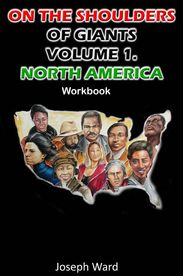|
On March 3, 1902, Sarah Rector was born in the all-black town of Taft, Oklahoma, within the Muscogee Creek territory of Oklahoma. Joseph Rector and Rose Mcqueen were Sarah’s parents. Joseph and Rose are said to be the descendants of black Americans who were enslaved by the Muscogee and were classified as freedmen after their enslavement ended. Sarah and her family were classified as Muscogee and entitled to Muscogee land due to the treaty of 1866, which recognized the Muscogee as one of the five civilized tribes. Because Sarah was recognized as a member of the Muscogee tribe, she was one of the 600 black children given land, approximately 160 acres. The land was given to the children because the American government wanted to integrate the Native American territory with the territory of Oklahoma. The land given to Sarah was not the best land to live on or cultivate. The land was located in Glenpool, a city in Tulsa, Oklahoma. The black members of the Muscogee tribe were given the undesired land, while the members with less African features were given better plots of land. Not only was the land nearly barren, but Sarah’s family also had to pay an annual tax of $30, a price that was not affordable for her family. Sarah’s father petitioned the Muscogee County courts so he could sell the land, but his petition was denied and the family was stuck with bad land that no one wanted. The Rector family was living in poverty struggling to pay taxes on land that was given to them by the government. To help pay the land taxes and provide for his family, Joseph Rector agreed to lease the land to either the Standard Oil Company or the Devonian Oil Company. Because the land was leased, it was used to drill for oil by B.B. Jones, an independent oil driller. 1913 was the year that the financial troubles of the Rector family came to an end. An oil well began to spew oil, so much oil it was called a “gusher”, spilling enough oil to fill 2,500 barrels of oil a day. Because the oil well was on Sarah’s plot she began to receive $300 a day. At the time, the law for the reservation required members of the Muscogee territory with wealth or assets of any kind to be assigned a white “supervisor”. Before oil was discovered on Sarah’s land, she was never pressured to have a supervisor, but after the oil, a white man named T.J. Porter was strongly suggested to be Sarah’s supervisor. Over time Sarah’s land came under the management of the Cushing-Drumright Oil Field and Sarah received royalties of $11,567. At the age of 12, Sarah became famous for being a young girl with wealth. As the news of her wealth spread, adults from all over began asking and begging a 12-year-old girl for loans. Later in 1913, Because of the wealth Sarah gained, Oklahoma Legislature attempted to classify Sarah as white so she could benefit from white privilege. In 1914, nasty rumors about Sarah and her family began to spread, and some of the rumors were spread via The Chicago Defender newspaper. They claimed that her parents were ignorant, uneducated, and poor, and they lived in inhumane conditions. The claims were so bad and spread so far W.E.B. Dubois, Booker T. Washington, and the NAACP became interested in Sarah’s welfare. After an investigation and interviewing the Rector family, Dubois, Washington, and members of the NAACP learned that all of the claims were false. Not only was Sarah in great care, Washington, Dubois, and the NAACP learned of the racism and discrimination the black members and other members of the Muscogee nations were facing at the hands of the local white people. Not only was Sarah in great care, but she was an intelligent young lady who was sent to learn at a boarding school at the Tuskegee Institute. By 1920, Sarah was classified as a millionaire and celebrating her 18th birthday. It is said that Sarah owned stocks, bonds, land, a number of businesses, and a boarding house. The land she owned was 2,000 acres at the prime river bottomland. She married a man named Kenneth Campbell in 1920. The couple was married for 10 tears producing 3 children. In 1934, she remarried a man named William Crawford who was a restaurant owner. Sarah would eventually move her family to Kansas City, Missouri where she purchased her home called the Rector House on 12th Street. Because of her wealth, Sarah was able to live a comfortable life free of poverty with access to resources. She was even able to befriend the black celebrities of that day. Sarah died in 1967 at the age of 65 but was able to literally leave generational wealth for her children and their children. Her life started in poverty, she was given land no one wanted, the land turned out to have oil in it, and her life immediately changed once the oil was discovered. This is the story of the wealthiest young black girl of her time, and possibly the first black woman millionaire in American history. J.A. Ward Click here to support the OTSOG book series. References: https://www.blackpast.org/african-american-history/rector-sarah-1902-1967/ https://www.blackenterprise.com/sarah-rector-11-year-old-richest-black-girl/ https://en.wikipedia.org/wiki/Sarah_Rector
1 Comment
11/2/2023 02:27:04 pm
"The Protection of Wisdom is like the Protection of money & the Advantage of Knowledge is Wisdom Preserves the LIFE of those who Have it." Ecclesiastes 7:12
Reply
Leave a Reply. |
Details
Categories
All
Click Here to join our mailing list
|
Contact Us: |
Connect With Us |
Site powered by PIT Web Design


 RSS Feed
RSS Feed



